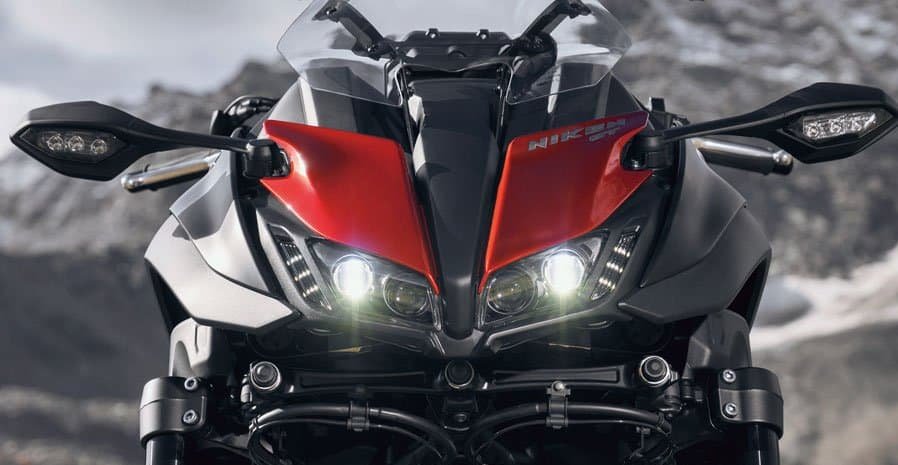The motorcycling world received surprising news on April 21, 2024, when Yamaha announced the discontinuation of the revolutionary Niken and Niken GT. This innovative three-wheeler, with its unique Leaning Multi-Wheel (LMW) front end, had been in production since 2018 and received a significant refresh in 2023. For enthusiasts and fans of the platform, the announcement came as a disappointment—particularly considering the comprehensive updates Yamaha had invested in just a year earlier.
In this article, we’ll explore the factors that likely contributed to the Niken’s discontinuation and why, despite this decision, the Niken remains an important and influential motorcycle that will continue to matter in the years ahead.
Understanding the Discontinuation
While Yamaha hasn’t publicly elaborated on all the specific reasons for ending Niken production, we can analyze several factors that likely contributed to this decision:
Limited Sales Success
Despite its innovative design and the enthusiasm of its owners, the Niken didn’t achieve the sales numbers Yamaha likely hoped for. Several factors may have contributed to these disappointing sales:
- Price Point: At approximately £16,000 (and equivalent prices in other markets), the Niken GT occupied a premium price segment. This positioned it as more expensive than many conventional sport-touring motorcycles with similar performance characteristics.
- Niche Appeal: The Niken represented a bold departure from traditional motorcycle design. While innovation is admirable, radical changes can limit market appeal to early adopters and those willing to try something completely different.
- Size and Weight: The Niken’s substantial size and 270kg wet weight made it imposing for some potential buyers, particularly when considering low-speed maneuvering and storage.

Perception Challenges
The Niken faced several perception challenges in the marketplace:
- Aesthetic Resistance: The unconventional appearance of the Niken was polarizing. While some appreciated its futuristic look, others found it too far removed from traditional motorcycle aesthetics.
- Misconceptions: Many potential customers formed opinions without experiencing the Niken firsthand. Common misconceptions included assumptions that it was designed for older or less capable riders, or that it somehow offered a “less authentic” riding experience.
- Cultural Resistance: In some motorcycling circles, there exists a cultural resistance to anything that deviates significantly from the traditional two-wheeled format. This resistance created barriers to adoption regardless of the actual merits of the design.
Economic and Strategic Factors
Broader economic and strategic considerations likely played a role in Yamaha’s decision:
- Manufacturing Complexity: The Niken’s unique front end required specialized manufacturing processes and components, potentially making it more costly and complex to produce than conventional motorcycles.
- Resource Allocation: In an era of increasing focus on electric mobility and evolving emissions regulations, Yamaha may have decided to reallocate resources toward future-focused technologies rather than continue developing specialized combustion platforms.
- Market Trends: The sport-touring segment has seen increasing competition from adventure-touring motorcycles, which offer similar long-distance comfort with added versatility. This shifting market landscape may have further challenged the Niken’s position.
The Niken’s Enduring Significance
Despite its discontinuation, the Yamaha Niken represents an important chapter in motorcycle development for several reasons:
Technical Innovation
The Niken pushed the boundaries of what’s possible in motorcycle design:
- LMW System: The development of a production Leaning Multi-Wheel system that preserved the authentic motorcycle experience while enhancing stability was a significant engineering achievement.
- Manufacturing Advances: The production techniques developed for the Niken’s complex front end likely contributed valuable knowledge that will inform future motorcycle design and manufacturing.
- Chassis Development: The chassis solutions required to make a three-wheeled leaning motorcycle handle properly required innovative approaches that may influence future designs.
Conceptual Importance
Beyond its technical specifications, the Niken demonstrated important concepts:
- Alternative Stability Solutions: The Niken showed that enhanced stability could be achieved without sacrificing the fundamental joys of motorcycling—the lean, the connection to the road, and the sense of freedom.
- Safety Innovation: Rather than relying solely on electronic aids for safety, the Niken explored mechanical solutions to enhance grip and stability, pointing toward hybrid approaches that combine the best of both worlds.
- Experience Enhancement: The Niken demonstrated that innovation could expand the motorcycle experience rather than just making incremental improvements to the existing format.
Cultural Impact
The Niken made an important cultural contribution to motorcycling:
- Challenging Conventions: By challenging deeply held assumptions about what constitutes a “proper” motorcycle, the Niken sparked valuable discussions about innovation and tradition in motorcycling.
- Expanding Possibilities: For its owners, the Niken expanded the conditions and scenarios in which they could comfortably and confidently ride, potentially extending their motorcycling seasons and opportunities.
- Collector Interest: As a limited-production model with innovative technology, the Niken is likely to become a collector’s item, preserving its place in motorcycling history.
The Legacy Continues: LMW Technology in Other Models
While the Niken itself has been discontinued, Yamaha’s investment in Leaning Multi-Wheel technology continues in other products, particularly the Tricity line of scooters. These urban-focused three-wheelers demonstrate Yamaha’s ongoing commitment to the concept, albeit in a different market segment.
The technology developed for the Niken may also influence future products as Yamaha and other manufacturers continue to explore the balance between innovation and tradition in motorcycle design.
For Current and Future Niken Owners
For those who already own a Niken or are considering purchasing one of the remaining new units or a used example, the discontinuation actually enhances the special nature of these motorcycles:
- Exclusivity: The limited production run means that Niken owners are part of a select group with a truly distinctive motorcycle.
- Support Commitment: Yamaha has a strong track record of supporting discontinued models with parts and service for many years, so owners shouldn’t worry about maintenance issues.
- Community Value: The dedicated Niken community, including sites like Niken Peeps, becomes even more valuable as a resource for owners to share information, experiences, and solutions.
Conclusion: A Bold Experiment That Pushed Boundaries
The Yamaha Niken may not have achieved the commercial success its innovative design deserved, but its impact on motorcycle development and culture is undeniable. As a bold experiment that challenged conventions and explored new possibilities for enhancing the motorcycling experience, the Niken deserves recognition and appreciation.
For those fortunate enough to experience the Niken firsthand, the enhanced stability, confidence, and unique character of this remarkable machine will continue to provide joy and value regardless of its production status. And for the broader motorcycling world, the ideas and technologies pioneered in the Niken will likely influence designs for years to come.
The Niken may have reached the end of its production life, but its legacy as one of the most innovative and boundary-pushing motorcycles of the modern era is secure.
Are you a Niken owner? How do you feel about the discontinuation? Are you considering purchasing one of the remaining examples? Share your thoughts with our community!




